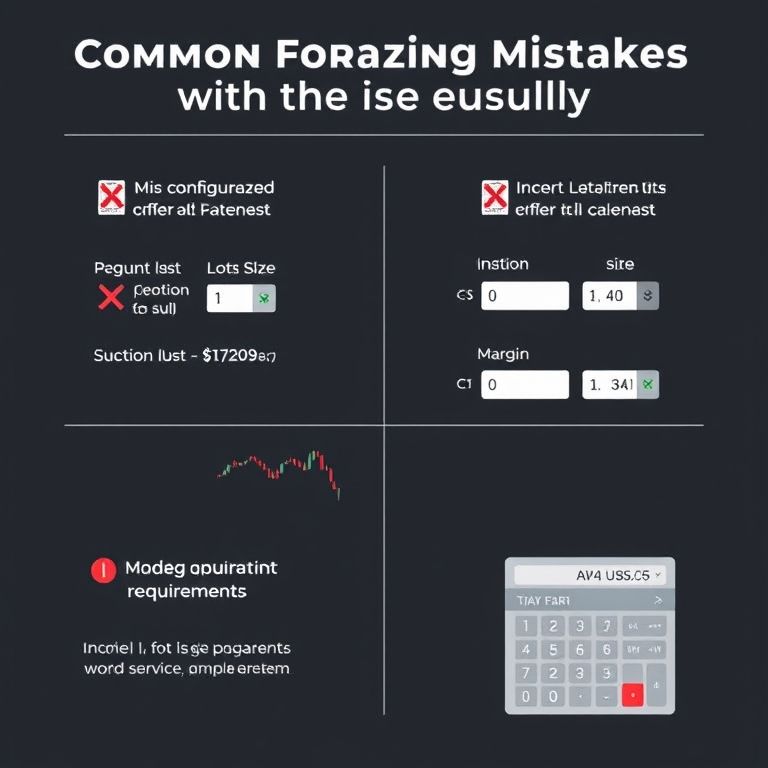Common mistakes when using a forex position size calculator
Common mistakes when using a forex position size calculator
Introduction
You’re staring at a quiet chart before a big session, clicking through a forex position size calculator, and thinking you’ve got risk dialed in. The problem is, a few small oversights hide in the margins and turn precise sizing into a shaky trade plan. This piece breaks down the typical missteps, adds real-life context, and shows how sizing discipline translates across assets, DeFi, and the evolving world of prop trading.

Function of a forex position size calculator
- What it does: converts your chosen risk per trade into a concrete position size, given your stop loss and currency pair. It also checks margin needs and, ideally, clarifies pip value in your account currency.
- How to use it well: align inputs to reality—account base currency, leverage, instrument, and where your stop loss sits. A good calculator is a guardrail, not a ticket to overconfidence.
Common mistakes to avoid
- Treating risk as a fixed percent without considering volatility. A 1% risk on a quiet pair is different from a yen pair during a news spike.
- Forgetting currency conversion and base/quote currency mismatches. Dollars in a USD account behave differently from euros in a EUR account.
- Ignoring margin and leverage. You might size for risk, but a sudden margin call can erase gains.
- Misreading pip values or contract sizes. A misread here cascades into wrong position sizes across platforms.
- Skipping slippage, spreads, and fill risk. Real-world fills aren’t perfect.
- Copying a default setting without tailoring to the asset. Each instrument has its own volatility profile.
- Not testing across scenarios. Paper trades around events teach you what the calculator can’t show you.
Real-world examples and lessons
Early in my trading, I sized for a 20-pip stop on EUR/USD and assumed ideal fills. When volatility spiked on a data release, the same size produced a much bigger move, giving me a sharper drawdown than expected. The fix? adjust stop distances with true volatility (ATR-based sizing) and re-check the pip value under the day’s conditions. It’s the difference between a calculated risk and an actual risk.
Across asset classes
- Forex and indices share volatility themes, but options require delta-aware sizing and premium considerations; stocks add liquidity constraints; crypto trades 24/7 with unique event-driven risk; commodities bring supply shocks into play. The core message: size with volatility, not just account percentage.
- A practical approach: use a consistent risk percentage framework but scale using ATR or a volatility multiplier for each asset class.
Reliability and strategic takeaways
- Set a practical risk per trade (0.5–1.5% is a common band) and adjust with volatility, not just price level.
- Build a small, repeatable checklist: input account size, currency alignment, risk %, instrument, stop distance, and margin check.
- Backtest minds-on: simulate a few scenarios (quiet day, high-volatility day, major event) to see if sizing holds.
DeFi, smart contracts, and future trends
- DeFi promises automation and direct access to liquidity, but it comes with oracle risk, contract bugs, and liquidity fragmentation. Sizing tools will need robust data feeds and on-chain verification to stay trustworthy.
- The trend points toward AI-driven analysis and smart-contract trading that can adjust risk in real time, while decentralization challenges remain.
Prop trading and the road ahead
- Prop desks prize disciplined sizing and scalable risk controls. Calculator-based processes sustain consistency when capital scales, helping traders stay within firm risk parameters while chasing edge.
Tagline
Size your risk, not your ego. Precision in sizing is the quiet edge you carry into every trade.
YOU MAY ALSO LIKE




